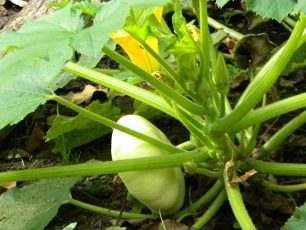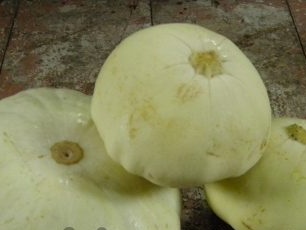 Not a single summer resident who loves zucchini and zucchini has not resisted not to grow squash. These vegetables are similar to each other, but nevertheless, squash is more delicate in taste and interesting in appearance than their cylindrical "relatives". Growing squash and care through seedlings is a more popular way than planting their seeds in the ground, because the bushes then grow strong and bear fruit faster. And about how to optimize the process of caring for squash, we now will tell.
Not a single summer resident who loves zucchini and zucchini has not resisted not to grow squash. These vegetables are similar to each other, but nevertheless, squash is more delicate in taste and interesting in appearance than their cylindrical "relatives". Growing squash and care through seedlings is a more popular way than planting their seeds in the ground, because the bushes then grow strong and bear fruit faster. And about how to optimize the process of caring for squash, we now will tell.
Pros and cons of squash
First, I would like to determine why summer residents so love to grow squash - what are their advantages? The fact is that it is very aesthetically pleasing to get such an interesting crop (and especially to observe how small squash cultivators develop). In addition, the pulp of these fruits is much more tender than zucchini and even zucchini. Many people like to eat raw squash, and if they cook, then very simple dishes: fried slices of squash or pickled squash (which add a minimum of spices).
At the same time, this vegetable crop also has disadvantages. Squash is more “capricious” than zucchini: not every land is suitable for them, but the plant’s fruits themselves are susceptible to fungal diseases - they can become covered with a “rash” in the form of dark dimples.
What conditions are needed for growing squash in the country?
This plant loves fertile land: unlike zucchini and zucchini, squash will not bear fruit well on sandy soil. Most suitable for them is chernozem or a similar light, but saturated with useful substances soil.
As for lighting, this culture loves the sun. If you plant squash in fertile soil, but the bed is in the shade, you will get a powerful bush with large leaves, but with sparse fruits. But so that the squash bushes in the sun do not dry out and develop evenly, they need to be regularly watered, directing a stream of water into the hole, and not onto the leaves.
Read how to grow zucchini in the open ground.
When to plant seedlings of squash?
If you want a large crop, there can only be one answer: the sooner the better. But here you need to proceed from the climate of your region and the weather situation. Squash will not survive the night frosts, so they should be planted on the bed when the air temperature warms up to at least 10 degrees at night. The ideal daily temperature for the development of squash is about 25 degrees, so that on cooler days the bushes will develop slowly. In general, usually, squash seedlings are planted in the ground in the second half of May or in June.
Squash - growing and care through seedlings
1. For each seedling bush, form a hole in the ground with a diameter of 30-40 cm and a depth of 20 cm. It has long been observed that squash with more capacious holes develop much better than those bushes in which the holes were shallow or from which water flowed after irrigation (this happens if the sides of the hole are blurred). Before landing, completely fill the hole with water and wait until it all goes into the soil. In the center of the hole, place a bush of seedlings, fix it at the base with wet soil and slightly rub it with fine dry soil (it will prevent the wet soil from drying out quickly).
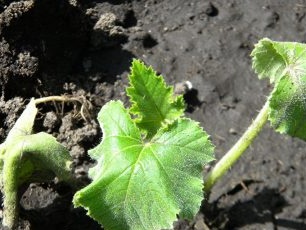
2. The first day of squash seedlings will take root, so it is better not to touch and not water it. In the daytime, the leaves of squash will look lethargic, but the next day they will fill with the juices of the earth and will delight you with a fresh look.
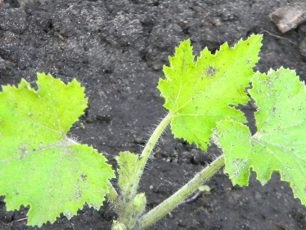
3. Regularly water the wells with squash water: watering will be needed at least once every two days, and it is better to do this in the early morning or after sunset.In addition to ordinary water, it is good to use special top dressing: fermented infusion of mullein (1 kg of mullein per 30 l of water) or grass infusion (1-2 kg of nettle, celandine, other succulent weeds in 30 l of water), which must also be fermented before irrigation. Watering squash with such infusions should be done no more than once every 2 weeks.
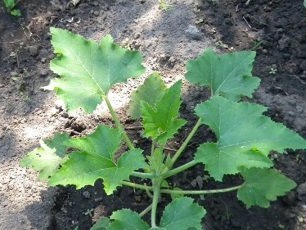
4. The first ovaries on squash bushes may appear even before flowering. During this period - both flowering and fruiting - you need to be very careful about plants. They should be watered more often, but top dressing it is better to stop infusions: their smell can scare off insects, and then the crop will turn out meager.
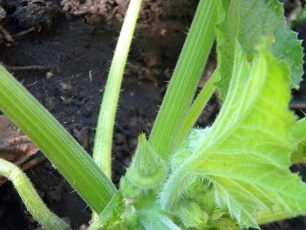
5. During irrigation (either with water or top dressing), one simple rule must be remembered: squash is watered in a hole so as not to splash leaves with liquid. Otherwise, the bushes may get sunburned (if you water in the morning) or “catch” a fungal disease (if you water in the evening).
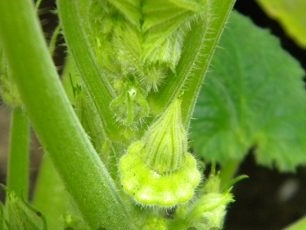
6. It takes at least 10 days to ripen one squash fruit, so be patient! Do not forget to inspect the squash bushes in time to remove the diseased fruits. If the disease affects more than one fruit, it is better to isolate the diseased bush from other plants - tear it up with the root and throw it away from the beds.
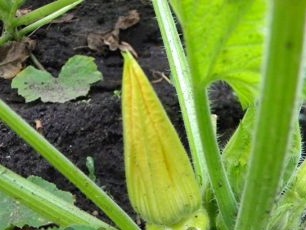
Growing squash from seedlings is a fairly simple task, bringing beautiful results!
